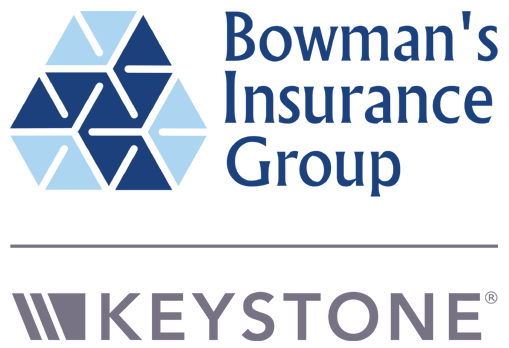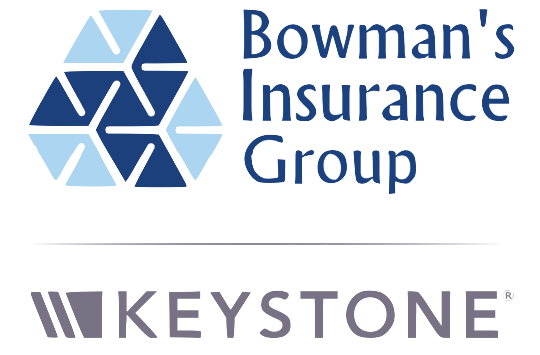
O=Workers’ compensation claims can significantly impact a business, both financially and operationally. For employers in Pennsylvania, understanding how to mitigate risks and prevent these claims is crucial. This article delves into effective strategies that Pennsylvania employers can implement to reduce the likelihood of workers’ comp claims, ensuring a safer workplace and a more productive environment.
Understanding Workers’ Compensation in Pennsylvania
Before diving into risk reduction strategies, it’s essential to understand the framework of workers’ compensation in Pennsylvania. The state mandates that most employers carry workers’ comp insurance, which provides wage loss benefits, medical benefits, and vocational rehabilitation for employees who sustain work-related injuries.
Employers are responsible for ensuring a safe working environment and complying with state regulations. Failure to do so can lead to increased claims and higher insurance premiums. Knowledge of the laws surrounding workers’ compensation can empower employers to take proactive measures to minimize risks.
Key Components of Workers’ Compensation
Workers’ compensation insurance covers various aspects, including:
- Medical expenses related to workplace injuries.
- Wage loss benefits for employees unable to work due to their injuries.
- Rehabilitation services to help injured workers return to their jobs.
Understanding these components can help employers recognize the importance of implementing safety measures to reduce the incidence of workplace injuries. Additionally, it is crucial for employers to stay informed about any changes in legislation or regulations that may affect their obligations. For instance, recent amendments to the Pennsylvania Workers’ Compensation Act have introduced new guidelines for reporting injuries and filing claims, which can significantly impact the claims process and the rights of both employers and employees.
The Financial Impact of Claims
When a workers’ compensation claim is filed, it can lead to significant financial repercussions for employers. Increased premiums, potential legal fees, and loss of productivity are just a few of the costs associated with claims. Moreover, a high claim frequency can affect a business’s reputation and employee morale.
By actively working to prevent claims, employers can not only save money but also foster a culture of safety and well-being within their organization. Investing in training programs that educate employees about workplace hazards and safe practices can be a proactive approach. Furthermore, implementing regular safety audits and encouraging open communication about safety concerns can empower employees to take ownership of their work environment, ultimately leading to reduced incidents and a more engaged workforce.
Creating a Safety Culture
A strong safety culture is the foundation of an effective risk management strategy. Employers should prioritize safety in every aspect of their operations, from training to daily practices. This involves not only adhering to safety regulations but also promoting an environment where employees feel empowered to speak up about safety concerns. A proactive approach to safety can lead to increased employee morale and productivity, as workers are more likely to feel secure and valued in their roles when safety is prioritized.
Training and Education
Regular training sessions are vital for educating employees about workplace safety. This includes:
- Proper use of equipment and machinery.
- Emergency procedures and first aid training.
- Identifying and reporting hazards.
Employers should consider incorporating hands-on training, simulations, and refresher courses to keep safety at the forefront of employees’ minds. Engaging employees in safety discussions can also enhance their awareness and commitment to maintaining a safe workplace. Additionally, utilizing technology such as virtual reality (VR) can provide immersive training experiences that allow employees to practice responding to emergency situations in a controlled environment, thereby reinforcing their skills and confidence.
Encouraging Open Communication
Encouraging open lines of communication between management and employees is essential for a robust safety culture. Employers should create a platform where workers can report unsafe conditions without fear of retaliation. Regular safety meetings can provide an opportunity for employees to voice concerns and suggest improvements. Furthermore, implementing anonymous reporting tools can help to ensure that all employees feel safe when bringing up potential issues, regardless of their position within the company.
When employees feel heard and valued, they are more likely to take ownership of their safety and the safety of their colleagues, ultimately reducing the risk of accidents and injuries. This sense of shared responsibility can foster a community of safety advocates within the workplace, where team members actively look out for one another. By recognizing and rewarding employees who contribute to safety initiatives, organizations can further solidify a culture that prioritizes well-being and vigilance, making safety an integral part of the organizational identity.
Conducting Regular Risk Assessments
Regular risk assessments are crucial for identifying potential hazards in the workplace. By proactively addressing these risks, employers can prevent accidents before they occur. A comprehensive risk assessment should evaluate all aspects of the work environment, including equipment, processes, and employee behaviors. This ongoing process not only helps in maintaining compliance with safety regulations but also fosters a culture of safety among employees, encouraging them to be vigilant and proactive about their own well-being and that of their colleagues.
Identifying Hazards
Employers should conduct thorough inspections of the workplace to identify hazards such as:
- Slippery surfaces
- Improperly stored materials
- Inadequate lighting
Once hazards are identified, employers can take corrective actions, such as improving lighting, implementing proper storage solutions, or providing anti-slip mats. Regular inspections can help maintain a safe environment and reduce the likelihood of injuries. Additionally, involving employees in the hazard identification process can provide valuable insights, as they are often the first to notice potential risks in their daily routines. Creating an open dialogue about safety can empower workers and encourage them to report hazards without fear of repercussions.
Implementing Safety Protocols
After identifying potential hazards, it is essential to develop and implement safety protocols to mitigate risks. This may include:
- Establishing clear guidelines for equipment usage.
- Creating emergency response plans.
- Setting up regular maintenance schedules for machinery.
When safety protocols are clearly communicated and consistently enforced, employees are more likely to adhere to them, resulting in a safer work environment. Furthermore, conducting regular training sessions can reinforce these protocols, ensuring that all employees are up-to-date on safety practices and aware of their roles in emergency situations. Incorporating real-life scenarios into training can also enhance understanding and retention, making employees more prepared to respond effectively in case of an incident. By fostering a proactive approach to safety, organizations can significantly reduce the risk of workplace accidents and create a culture where safety is prioritized at every level.
Investing in Ergonomics
Workplace ergonomics is a critical aspect of injury prevention. Poor ergonomic practices can lead to musculoskeletal disorders, which are among the most common types of workers’ comp claims. Employers should invest in ergonomic assessments and solutions to minimize these risks. By prioritizing ergonomics, companies not only protect their employees but also enhance overall productivity and morale, creating a healthier work environment that fosters creativity and innovation.
Assessing Workstations
Employers should evaluate workstations to ensure they are ergonomically sound. This includes adjusting chair heights, monitor placements, and keyboard positions to promote proper posture. Providing ergonomic tools, such as adjustable desks or supportive chairs, can also enhance employee comfort and reduce the risk of injury. Furthermore, it is essential to consider the specific needs of each employee, as individual body types and preferences can vary widely. Tailoring ergonomic solutions to fit these unique requirements can lead to even greater improvements in comfort and efficiency.
Additionally, encouraging employees to take regular breaks and stretch can help alleviate physical strain and promote overall well-being. Implementing a structured break schedule can remind employees to step away from their desks, engage in light physical activity, or even practice mindfulness techniques. These small adjustments can significantly reduce fatigue and improve focus, ultimately leading to a more dynamic and engaged workforce.
Promoting Physical Wellness
Incorporating wellness programs into the workplace can significantly reduce the risk of injuries. Employers can offer fitness classes, health screenings, and workshops on stress management. Promoting a healthy lifestyle not only benefits employees but also contributes to a more productive and engaged workforce. By creating a culture that values health, companies can encourage employees to take ownership of their well-being, fostering a sense of community and shared responsibility.
When employees feel supported in their physical and mental well-being, they are less likely to experience work-related injuries, leading to fewer claims. Additionally, providing resources such as access to mental health professionals or nutritionists can further enhance the effectiveness of wellness programs. By addressing both physical and mental health, employers can create a holistic approach to wellness that empowers employees to thrive both inside and outside the workplace, ultimately resulting in a more resilient and motivated team.
Implementing a Return-to-Work Program
A well-structured return-to-work program can significantly reduce the financial impact of workers’ compensation claims. These programs facilitate the transition of injured employees back to work, often in modified or alternative roles that accommodate their recovery.
Benefits of Return-to-Work Programs
Return-to-work programs offer numerous benefits, including:
- Reducing the duration of wage loss benefits.
- Helping employees maintain their skills and connections to the workplace.
- Promoting a sense of normalcy and support during recovery.
By actively engaging injured employees in the recovery process, employers can foster loyalty and reduce the likelihood of prolonged claims. Furthermore, these programs can lead to lower turnover rates, as employees who feel supported are more likely to remain with the company long-term. This stability not only benefits the workforce but also contributes to a more cohesive company culture, where employees feel a shared commitment to the organization’s success.
Creating a Supportive Environment
Employers should create a supportive environment for employees returning to work. This includes maintaining open communication about their recovery progress and providing necessary accommodations. Regular check-ins can help employees feel valued and supported during their transition back to work. Additionally, offering flexible work hours or the option to work from home can ease the adjustment, allowing employees to balance their recovery with work responsibilities effectively.
Moreover, training managers and supervisors to recognize the signs of distress and to respond empathetically can further enhance the supportive atmosphere. By demonstrating a commitment to their employees’ well-being, employers can enhance morale and reduce the chances of future claims. This proactive approach not only aids in the recovery of injured workers but also sets a precedent for a caring workplace culture, where mental health and physical well-being are prioritized, ultimately leading to increased productivity and job satisfaction across the board.
Monitoring and Adjusting Safety Practices
Safety practices should not be static; they require ongoing monitoring and adjustment to remain effective. Employers should regularly review their safety protocols and risk assessments to ensure they are up to date and relevant to the current work environment. This dynamic approach not only helps in identifying potential hazards but also fosters a culture of safety within the organization, where employees feel valued and protected.
Gathering Feedback
Feedback from employees is invaluable in identifying areas for improvement in safety practices. Employers should encourage employees to share their experiences and suggestions for enhancing safety measures. This can be done through surveys, suggestion boxes, or informal discussions. Creating an open dialogue about safety can empower employees, making them feel more invested in the safety culture of the workplace.
Additionally, regular safety meetings can serve as a platform for employees to voice their concerns and share insights. These meetings can also be an opportunity for training on new safety protocols or equipment, ensuring that everyone is on the same page. By actively seeking feedback, employers can make informed decisions about necessary adjustments to their safety protocols, ultimately reducing the risk of injuries and claims.
Staying Informed on Regulations
Workers’ compensation laws and safety regulations can change over time. Employers must stay informed about any updates to ensure compliance and maintain a safe work environment. Regular training sessions and participation in industry associations can provide valuable insights into best practices and emerging trends in workplace safety. Furthermore, subscribing to industry newsletters or attending safety conferences can keep employers abreast of new technologies and methodologies that enhance safety protocols.
Employers should also consider implementing a safety management system that tracks compliance with regulations and monitors safety performance metrics. This data-driven approach can highlight trends over time, allowing for proactive adjustments to safety measures. By staying proactive and informed, employers can adapt their safety strategies to meet evolving standards and reduce the likelihood of claims. This commitment to safety not only protects employees but also enhances the overall productivity and morale within the organization, creating a win-win situation for all stakeholders involved.
Conclusion
Reducing the risk of workers’ compensation claims in Pennsylvania requires a multifaceted approach that prioritizes safety, communication, and employee well-being. By fostering a strong safety culture, conducting regular risk assessments, investing in ergonomics, implementing return-to-work programs, and continuously monitoring safety practices, employers can create a safer work environment for their employees.
Ultimately, a commitment to safety not only protects employees but also enhances productivity, morale, and the overall success of the organization. By taking proactive steps to minimize risks and prevent claims, Pennsylvania employers can ensure a thriving workplace for all.













